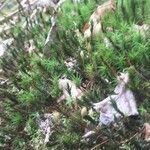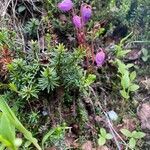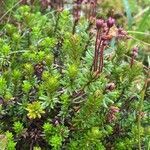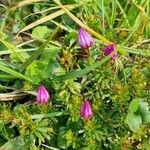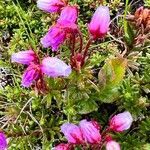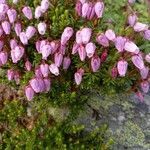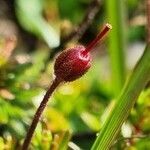Plants prostrate to ascending or erect, diffusely branched, often matlike, 5-25 cm. Leaves spreading, imbricate; blade linear to spatulate, 4-10 × 1-1.3 mm, margins finely glandular-serrulate, abaxial surface glabrous or glandular. Inflorescences umbellate, 1-6-flowered. Pedicels 10-30 mm, glandular; bracteoles 2. Flowers nodding; sepals linear to lanceolate, 3-4 mm, margins not ciliate, glandular abaxially; corolla purple, urceolate, constricted at mouth, 4-9 mm, glandular, lobes recurved, ca. 1 mm; stamens 8-10, included; filaments 3-3.5 mm, glabrous; anthers 1.2-1.5 mm; ovary globose, 2-2.5 mm, glandular; style included, 4-5 mm. Capsules 5-valved, globose, 2.5-3.5 mm, glandular. 2n = 24.
Diffusely branched from a woody root, 5–15 cm; lvs alternate, crowded in many rows, narrowly oblong, 4–10 mm; minutely serrulate; petiole 1 mm, arising from a swollen sterigma; pedicels 1–2 cm, becoming 3–4 cm, minutely stipitate-glandular; sep lanceolate, 4 mm; cor ovoid, constricted at the throat, purple, 1 cm, the rounded lobes 1 mm; fr 4 mm, minutely glandular; 2n=24. Circumboreal, s. to alpine summits in Me. and N.H. July, Aug.
